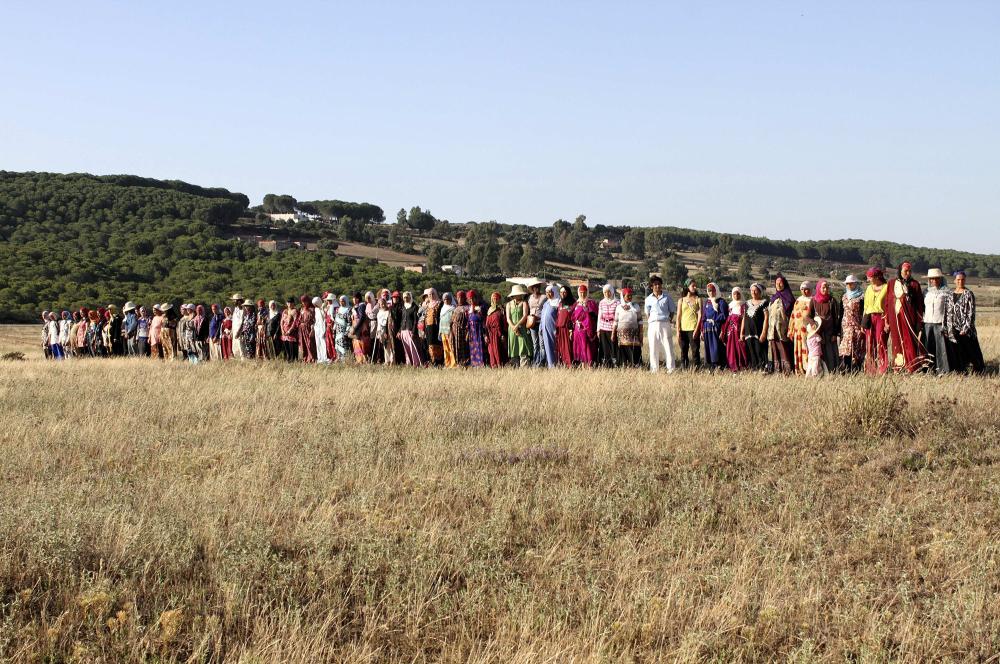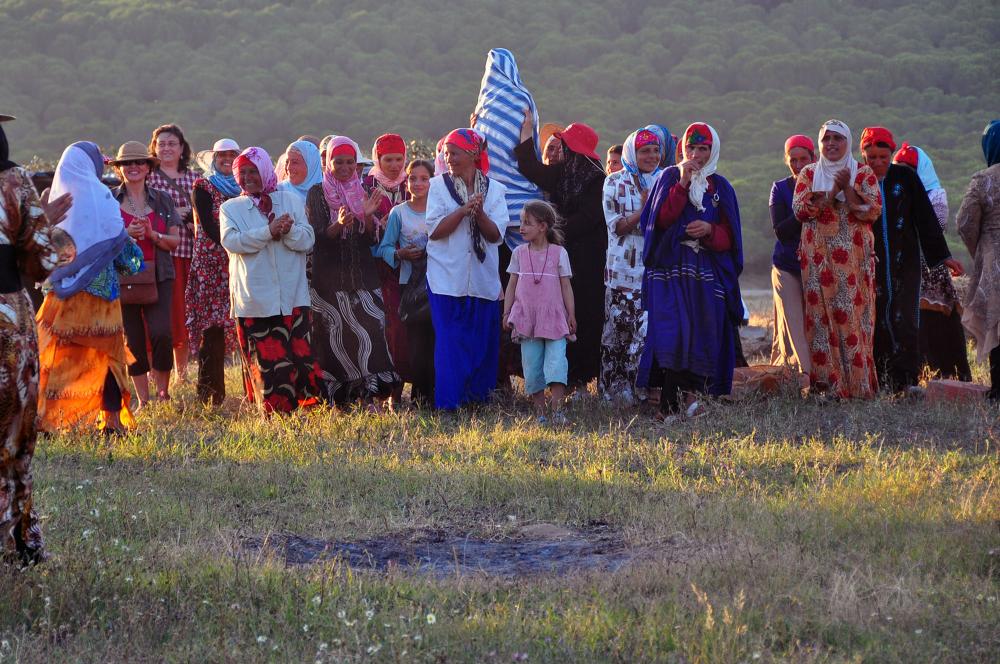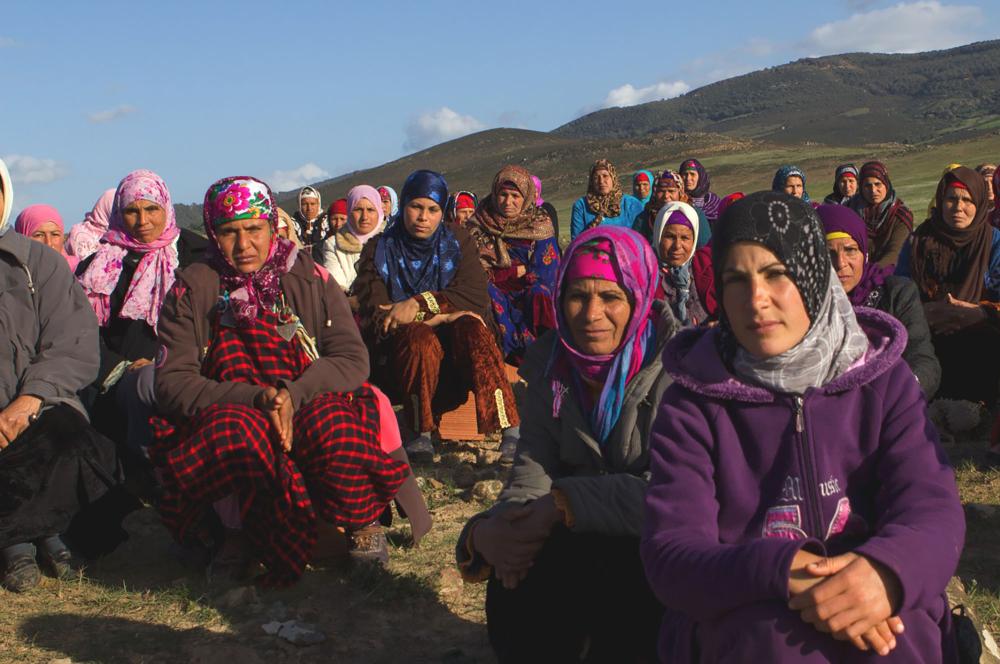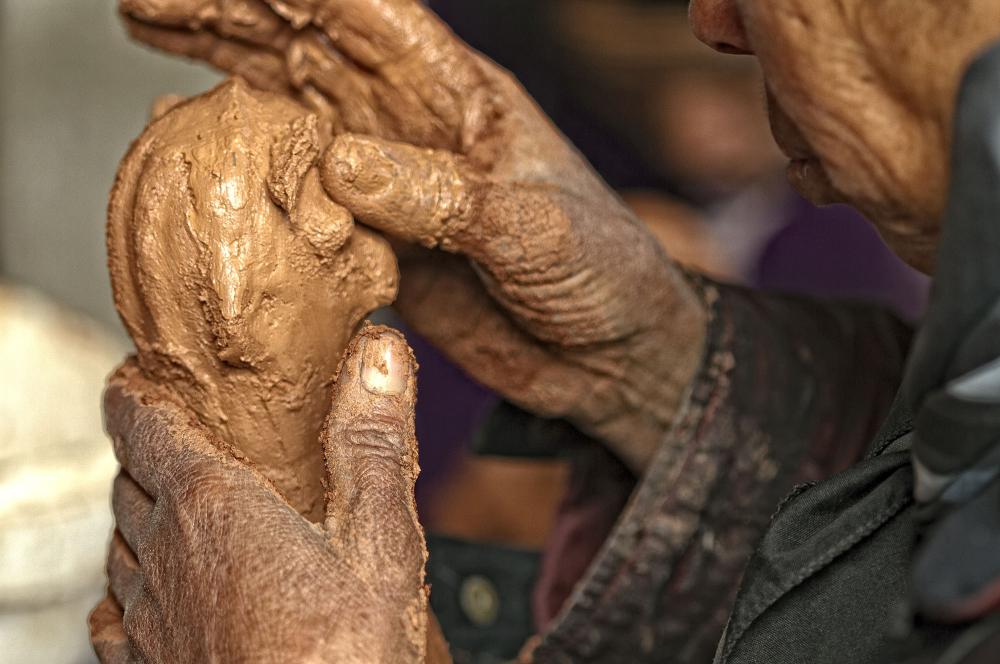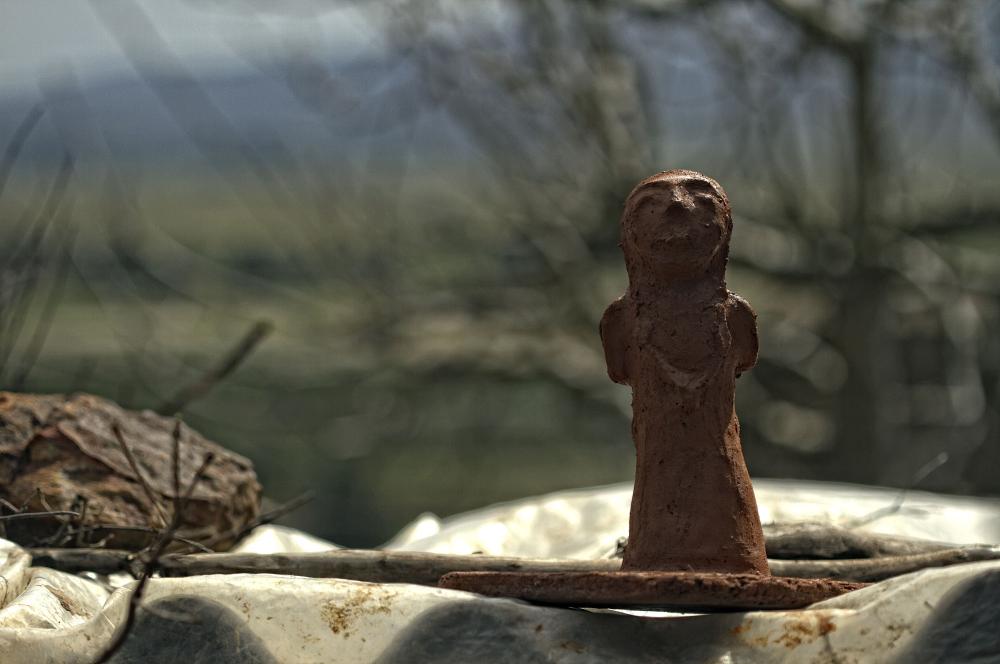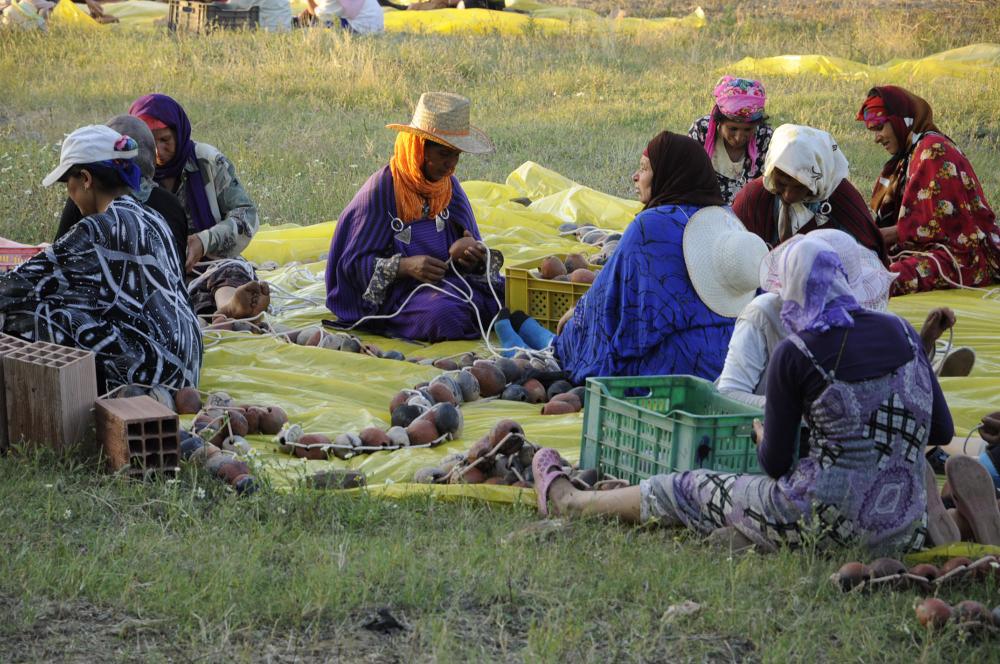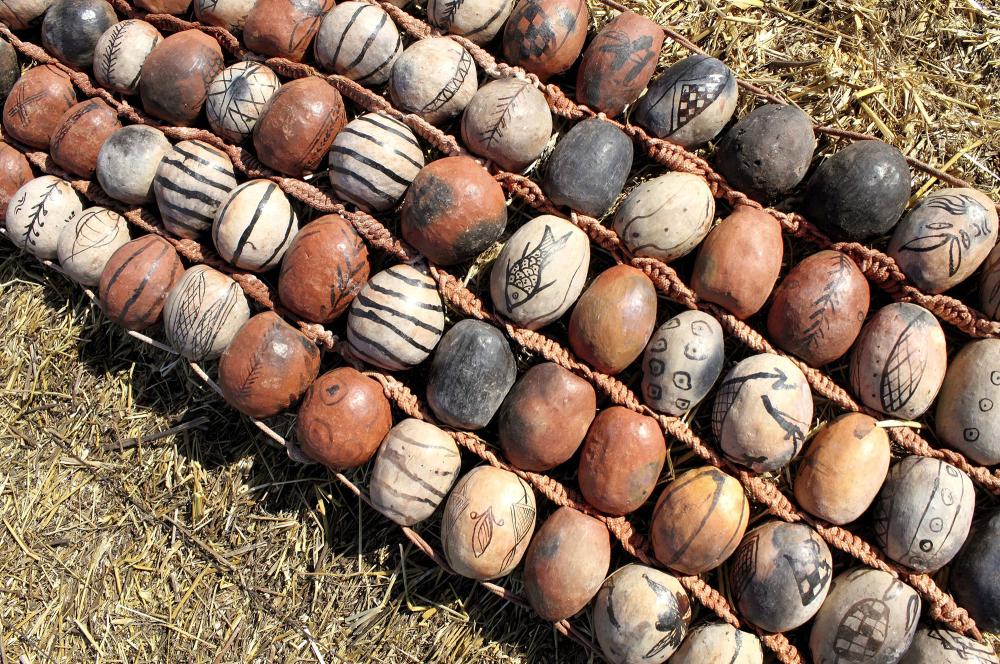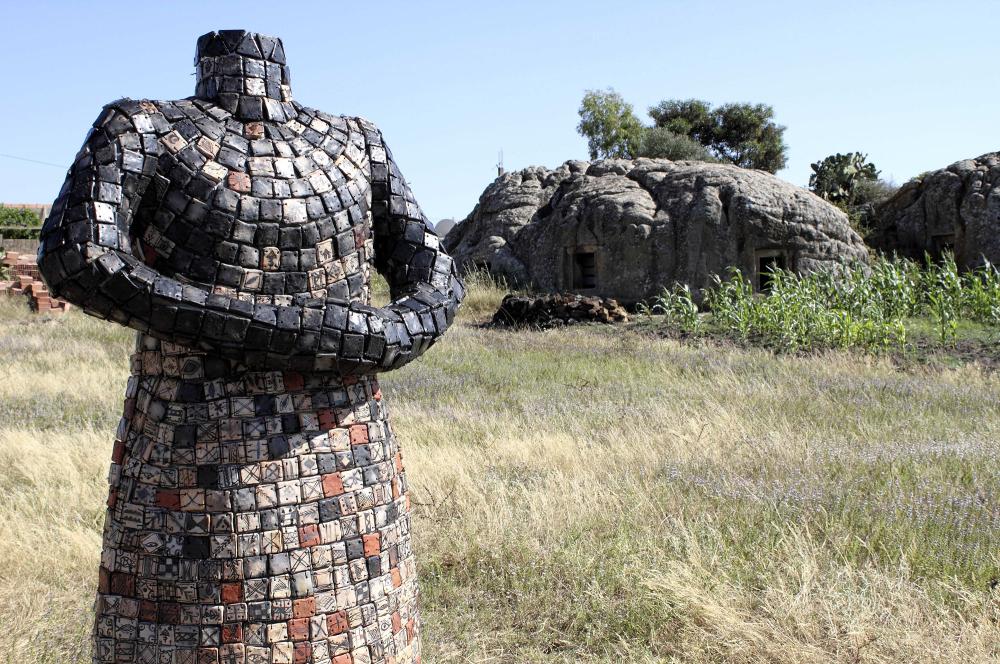Laaroussa Project
Artistic Factory of Popular Spaces
Following an encounter in a Parisian display in 2010 where a Sejnane pottery piece was sold ten times its price, L'Art Rue association by Selma and Sofiane Ouissi decided to delve into this territory of north-western Tunisia that carries in its collective memory, a female domestic know-how related to a work of the land that distinguishes the Mediterranean.
Its symbolism, its formal appearance and its design take us through the ages, the civilizations and the brewing of the peoples of the Mediterranean basin, whether Copts, Greeks, Carthaginians, Romans or Berbers.
This long forgotten, almost extinct testimony lives on in a harsh and precarious environment where the women of Sejnane extract, harvest and laboriously transform all the natural resources needed to make their pieces.
• Birth of "Laaroussa": Act I and II (October 2010 to August 2013)
After a long time of location search, meetings, discussions and collection of ideas for the professional fulfillment of the women potters (October 2010 to January 2011), L'Art Rue decided to work with around sixty artisans of Sejnane along with multidisciplinary artists of that territory and its surrounding areas: Ghrof, Jmaïat, Stailiya, El Guetma, Sbessa 1 and 2. Together, they created an artistic factory of popular spaces and a poetic-political device, to enhance the skills that were at the service of a collective dynamic of production. The aim was to use contemporary art to promote an ancestral female craft, in order to preserve a cultural asset.
«Laaroussa» connotes both the doll the bride in Tunisian dialect. It represents the symbol of femininity, strength and fertility of women potters in the region.
Starting from February 2011, pottery workshops were set up one week per month (land preparation, crushing the gathered material, modeling, polishing, decoration and finally putting the created object into the oven). This served both an educational purpose and provided workshops for bodily awakening, singing, fine arts, cooking and tea preparation.
Art has the power to give rise to powerful moments of sharing and living together where any hierarchy is banned and where the horizontal structuring of a community allows the promotion of individual skills, at the service of a collective dynamic of production. It is up to us to take the initiative and join forces so that they can emancipate themselves from what is decomposing them. From there, we show our resentment towards what makes our lives a vast austerity plan. Elsewhere, too, voices, struggles and knowledge are echoing the rejection of an atrophied world, sacrificed under the yoke of a structurally in crisis capitalism that wounds our ways of being, learning and doing.
Extract from the press kit of «Laaroussa» - June 2011.
• “Laaroussa” Act I (From October 2010 to June 2011)
From October 2010, we roamed the region of Sejnane and had in-depth conversations with the potters of that area, as they were bearers of strong identities and peculiar knowledge. These women work independently, in scattered hamlets.
Welcomed by Aïda who opened her home that was under construction, we gathered the women potters to create a horizontal society where each of them could find her place through pottery workshops, cooking workshops, nurseries etc.
The artists that were invited to join the project «Laaroussa»:
→ Sonia Kallel (visual artist)/ Tunisia
→ Saloua Ben Salah (musician) / Tunisia
→ Selma and Sofiane Ouissi (dancers, choreographers) / Tunisia
→ Abdellatif Snoussi (photographer) / Tunisia
→ La Luna Collective (visual arts, living spaces) / France
→ Les femmes conteuses et brodeuses d'Arlène (immigrant women from Nantes) / France
→ CéCiL Thuillier (filmmaker) / France
→ Tobi Ayédadjou (visual artist) / Benin
These artists worked alongside the women potters, with the clay of Sejnane and the expertise of the women involved, who also developed their own creations/ experimentations.
Act I of «Laaroussa» carried on for six months, leading to the organisation of workshops and the definition of the functions necessary for the production of works and their valorization among the populations.
The result of this first act of the project «Laaroussa» was presented in Sejnane in June 2011 to promote a policy of decentralization of artistic action. An open-air exhibition, in the middle of the fields, welcomed a targeted public (businessmen, politicians, journalists, Tunisian and foreign cultural services, etc.), an urban public that moves to a rural region.
The works were then exhibited in Dar Bach Hamba in the Medina of Tunis (July-August 2011), at the Automnales de Genève (Switzerland, November 2011) and at the B'chira Art Center in Sidi Thabet (March 2012).
The Creations of "Laaroussa" Act I:
→ Multi-hand dolls - collective artwork by the women potters
→ Quand la terre et l’air se rencontrent - vocal composition by Saloua Ben Salah with Sassia, Chadlia, Najia and Hidhba Saïdani
→ Une poétique du geste: «Laaroussa» - choreographic video by Selma and Sofiane Ouissi, co-directed by CéCiL Thuillier, edited by Nicolas Sburlati with the sound collected in situ by David Bouvard
→ La robe idole de Sejnane - artwork by Sonia Kallel
→ Perles de Sejnane - artwork by Tobi Ayédadjou
→ Le Lieu rêvé - installation and video by Collectif La Luna
→ Cartography - embroidery work by the seamstresses of Arlène
→ La ligne de vie - video by CéCil Thuillier on an idea by Selma & Sofiane Ouissi
→ Le Journal des Voix de Sejnane - sociological journal on La terre, l'attente, la femme. Investigation by Yacine Blaïech and Slah Ben Ayed
→ Ce que leurs mains racontent - photo exhibition by CéCiL Thuillier
• “Laaroussa” Act II (From October 2012 to August 2013)
A MediterraneanPartnership
Building on the success of Act I (October 2010-June 2011), «Laaroussa» continued from October 2012 to August 2013 as part of exchanges between the two shores of the Mediterranean (Aubagne-Sejnane).
Indeed, Marseille Provence 2013, European Capital of Culture and the Pays d'Aubagne et de l'Etoile, clay territory, support in 2012-2013 «Laaroussa» as an emblem of the Tunisian renewal reclaiming its heritage through an innovative language open to the world.
From the meeting between artists, experts, committed actors, stemmed «Laaroussa»-Act II, a project comprising two parts: a project of technical and artistic cooperation that takes into account local resources and aims to safeguard knowledge-make traditional while offering a technological evolution that can be assimilated and reproduced to Sejnane and a commission to Selma and Sofiane Ouissi for a choreographic creation.
The 2012/2013 objectives of «Laaroussa»-Act II were to support the collective of 60 women of «Laaroussa» in the prefiguration of the functioning of a production cooperative and to set up a manufacturing protocol, adapted to the Tunisian and international markets.
Cooperation and Participation in the Argilla Fair
For 18 months, a laboratory of experimentation and expertise was set up in Sejnane with the ceramic artist Emmanuelle Not and the kiln technician Jean-Louis Schiano in an artistic and technical approach to pottery. From a problem of fragility of the pieces and immersed in the universe of Sejnane, they experiment with women potters a new cooking process improving the quality of the piece without deteriorating its aesthetic aspect and its heritage value. Moreover, on the principles of the workshops of the factory, moments of exchange and training offered women and Emmanuelle a space of creation and exchange around two cultures of clay.
In June 2013, eight potters took part in ten days of training in Saint-Zacharie (France) and two others represented them at the Argilla d'Aubagne in August 2013.
A collective work of 144 pieces and a first emblematic collection of 200 dolls stamped were created. And it was in August 2013, that the 80,000 visitors of the Salon Argilla discovered the result of this work.
The Creations of "Laaroussa" Act II:
→ La collection d’objets de la fabrique - collective artwork by the women potters of Sejnane accompanied by Aulde Cazorla, specialist in works derived from heritage
→ Les vaillantes et volontaires - ceramic work of 144 pieces by Emmanuelle Not, along with the women potters of Sejnane
→ "Laaroussa" - choreographic, musical and video creation by Selma and Sofiane Ouissi
Laaroussa by Christine Bruckbauer, in Nafas, 2011.
Practical information
Laaroussa
From October 2010 to August 2013 in Sejnane (Tunisia)





